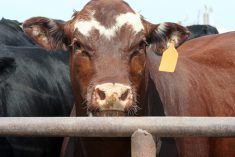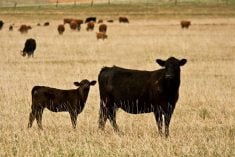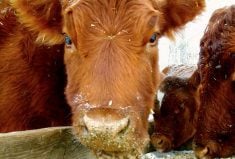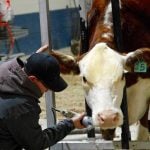Western Canadian feeder cattle markets were unchanged from week-ago levels. Favourable weather conditions enhanced buying interest from cattle feeders in Feedlot Alley; however, cattle-on-feed inventories in Alberta and Saskatchewan are running 16 per cent above year-ago levels.
Pen space remains at a premium due to limited capacity. County permit fees and added regulations have also contributed to the higher yardage costs. After years of consolidation in the feedlot sector, some idle capacity has come back on stream. Custom cattle feeders don’t want to guarantee a cost per pound gain given the uncertainty in feed grain prices. This has made it difficult for the cattle feeding investor, but these players are slowly finding space and negotiating terms before year-end.
Read Also

Canadian trade data delayed by U.S. government shutdown
Canadian international trade data for September will be delayed indefinitely due to the ongoing partial shutdown of the United States government, Statistics Canada said Friday, Oct. 24.
Steady demand was noted from Ontario buyers in the eastern Prairie regions. U.S. interest was quiet due to the Thanksgiving holiday. U.S. cash feeder prices remain under pressure, which has spilled over into Western Canada.
In central Alberta, a group of Charolais mixed steers weighing just over 600 lbs. sold for $208; in Manitoba, a group of Angus-based Simmental blended steers averaging 590 lbs. sold for $214. East-central Saskatchewan was a hot pocket for lighter weight calves. Mixed steers averaging 510 lbs. were quoted at $234; in southern Alberta, medium- to larger-frame tan steers averaging 520 lbs. were valued at $225 landed in the feedlot. The cow-calf producer appears to be selling cattle sooner than normal this year. Auction market reports note a year-over-year increase in the number of lightweight bawlers coming on the market. In southern Manitoba, Angus mixed steers averaging 450 lbs. were quoted at $244; in central Alberta, red mixed steers averaging 425 lbs. sold for $254.
The mid-week release of the U.S. Department of Agriculture’s Cattle on Feed report was supportive for the nearby fed cattle market; however, cattle feeders continue to eye the year-over-year increase in beef production next summer. China’s investigating Australia for “anti-dumping” barley, which could result in larger offshore movement for Canadian feed barley. All the trade issues in the world have added to the cautious attitude amongst feedlot operators. Buyers lack confidence this year.
— Jerry Klassen manages the Canadian office of Swiss-based grain trader GAP SA Grains and Produits Ltd. and is president and founder of Resilient Capital, specializing in proprietary commodity futures trading and market analysis. Jerry consults with feedlots on risk management and writes a weekly cattle market commentary. He can be reached at 204-504-8339.

















